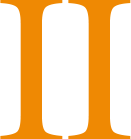Our Process
Throughout the design process, we listen, collaborate, design, and innovate.
Our product design and development process spans five phases of meaningful collaboration with our clients and various project teams.
Is your project already well underway, or do you just need to supercharge your own internal team? No problem — our team of experts can jump in at any point along the product development process and work as an extension of your team.
Amazing things happen when people put their heads together. The initial phase of our design process is all about getting to know you and understanding your values and objectives. We listen closely and ask a lot of questions. What ideas and concepts excite you? What are your end users’ priorities? How do you envision the product? Where does it fit into your overall brand strategy? What’s already out there?
These preliminary discussions are often neglected, but we feel they’re critical to ensuring project success. The better we frame and define your idea at the outset, the better equipped we are to efficiently and effectively create a successful product.

PHASE ONE
SPECIFICATION DEFINITION

PHASE TWO
CONCEPT DESIGN
Our entire team contributes to concept design conversations, including the president and other team leads. Together, we brainstorm directions, analyze a range of innovative ideas, and present you our findings. This is the napkin sketch phase of our process. We’ll identify innovative solutions that can help your organization break bold new ground. We then test, evaluate, and combine our ideas into a consolidated concept, which our talented design team brings to fruition.
We pride ourselves on bringing together a multidisciplinary team at this early stage, as we strongly believe that the most impactful products are developed through a truly collaborative approach.
Once we nail down a direction, our multidisciplinary design team splits into groups based on core competencies, and we start detailing every aspect of your product. We’re in constant communication as we go. Our industrial designers refine how your end users will interact with your product, and prototypes might be tested with user groups to generate new insights. As our mechanical team develops the functional details, we might deploy analysis tools to refine everything from thermal management strategies to the resonant response of the mechanical system. Meanwhile, our electronics hardware team will be busy developing schematics for printed circuit boards. At the same time, working closely with the hardware team, our software designers will be busy developing the system architecture; we like to prototype early and will often bring up development boards to accelerate the software design process.
Finally, our UX and UI designers work closely with our industrial design team to ensure a seamless integration of the product’s physical and digital identity. You could say we’re a hive mind.

PHASE THREE
DETAILED DESIGN

PHASE FOUR
PROTOTYPE TESTING
& EVALUATION
This is where we start bringing your ideas to life. Using our established network of partners, we get your product prototyped quickly; from tradeshow-ready plastics to complete printed circuit board assemblies, we handle it all.
At the same time, prototypes are more than just teasers for future clients or investors – they’re tools we can use to improve and refine your product. We test the forms, fits, and functions of the design’s physical aspects. Printed circuit boards go through a systematic bring-up process in which the assembly, hardware, firmware, and software elements are all successively tested, validated, and debugged. We then incorporate all the improvements and modifications into the final design.

PHASE FIVE
FINAL RELEASE
& MANUFACTURING HANDOFF
Release to manufacturing is the stage in the product development process where your product is considered complete and ready for mass production. It marks the end of the development phase and the beginning of the production phase. RTM is an important milestone for a product because it represents the point at which the product is considered to be fully functional and ready for widespread distribution.
This phase typically begins with the completion of all design and development work on the product. This includes testing, and any necessary adjustments or refinements. Once the product is deemed to be ready for mass production, it is released to the manufacturing team for production. Before a product is released to manufacturing, it is important for the design team to ensure that all necessary documentation is in place. This includes technical drawings, component specifications, and any other necessary documentation that will be used by the manufacturing team to produce the product. It is also important for the design team to work closely with the manufacturing team to ensure that the product can be produced efficiently and cost-effectively.
Tungsten's in house New Product Introduction (NPI) assembly facility can help in this scaling portion of the manufacturing launch. Our staff engineers and technicians work closely to ensure a smooth transition to large scale manufacturing, by creating process instructions, assembling and testing small batch production, to derisk the manufacturing transition.
GET IN TOUCH
LET’S PUT OUR HEADS TOGETHER
Complete the form below and a member of our team will get back to you!
